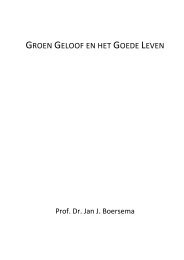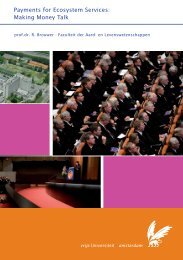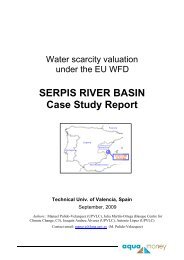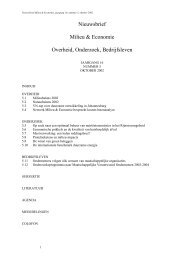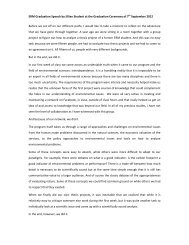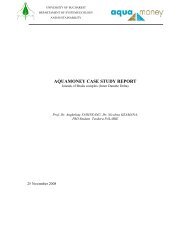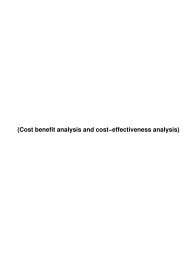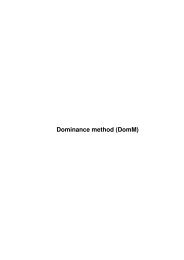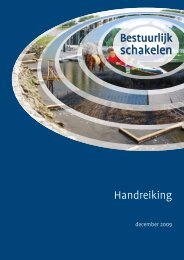Case study report Po Italy - VU University, Institute for Environmental ...
Case study report Po Italy - VU University, Institute for Environmental ...
Case study report Po Italy - VU University, Institute for Environmental ...
You also want an ePaper? Increase the reach of your titles
YUMPU automatically turns print PDFs into web optimized ePapers that Google loves.
AquaMoney<br />
“full” cost <strong>for</strong> water has been calculated taking into account depreciation costs of new infrastructures. This in<strong>for</strong>mation<br />
is generally used to allow a rough evaluation of cost recovery. Resource and environmental costs are mentioned in some<br />
documents (e.g. PTA Piemonte), though the origin of their calculation is unclear.<br />
2.5 Survey areas: characteristics and motivations<br />
The IT1 survey was located in the sub-basin having as administrative reference the ATO 4, Modena. The area is located<br />
in the extreme south of the <strong>Po</strong> Basin (Figure 2). The sub-basin area is about 3000 km 2 (60% mountain and 40% plain)<br />
with about 670000 inhabitants. In this area there are three main rivers (Secchia, Panaro and Enza) flowing from southwest<br />
to north-east and flow in the <strong>Po</strong> river.<br />
Figure 2: <strong>Po</strong> Basin Area and in detail the Modena area.<br />
Several reasons justify the choice of this area:<br />
1. The area is the one with the highest scarcity problems in the whole <strong>Po</strong> basin; scarcity concerns in particular the<br />
highest part of the plain area at the foot hill of Apennines.<br />
2. Scarcity problems reflect substantially also in quality issues; the main conflicts arise during summer between<br />
agriculture and the environmental uses.<br />
3. The location was convenient <strong>for</strong> the interviewers; in fact the distance between Bologna and Modena is only<br />
about to 50km.<br />
The IT2 survey was conducted partly in the area of <strong>Po</strong> basin and partly in an area of the neighbouring Reno basin. The<br />
choice of this area was driven by the following reasons:<br />
1. It allows to compare the perception of water issues in the <strong>Po</strong> basin and in another basin, heterogeneous as<br />
regards water management problems, but similar in terms of socio-economic context.<br />
2. The location of the Reno basin was also convenient <strong>for</strong> the interviewers (Bologna is included in the basin).<br />
The partial overlapping among the two surveys (IT1 and IT2) also allows some comparison of the results under two<br />
different design.<br />
3. Survey 1 (Common) - Set up of the survey<br />
3.1 Questionnaire design (common)<br />
This evaluation is based on the use of CE to estimate the environmental value of quantitative water uses and the<br />
willingness to pay to reduce the risks of water shortages. This survey followed the Common questionnaire and Common<br />
design of the CE proposed by the Group on water scarcity within the AquaMoney consortium.<br />
3.2 Sampling procedure and response rate<br />
The survey was made using face to face interviews in Modena with a response rate equal to 17% (242 respondents out<br />
of 1381 people contacted). We started the survey at the beginning of July 2008 but we stopped because of the rain<br />
4





